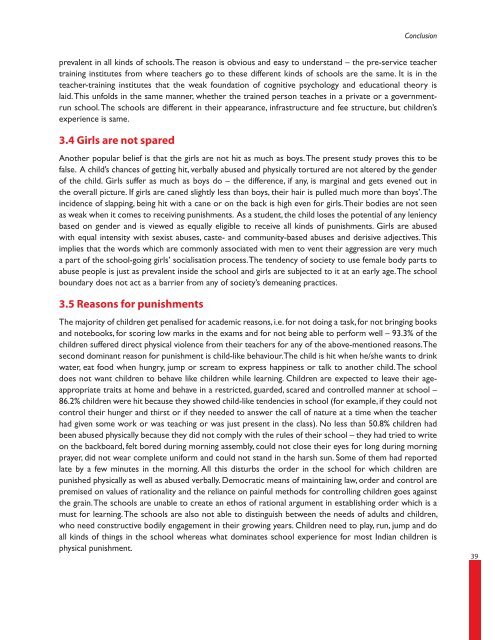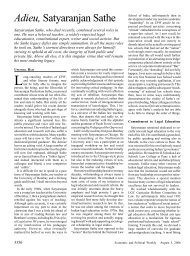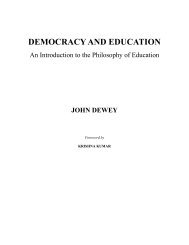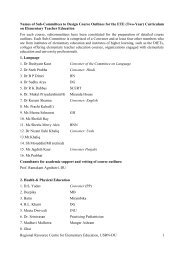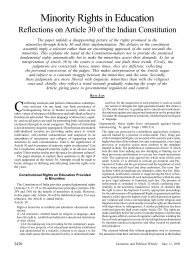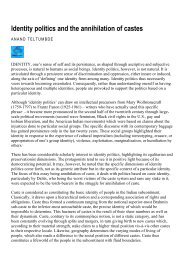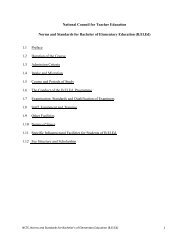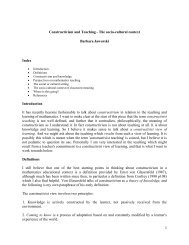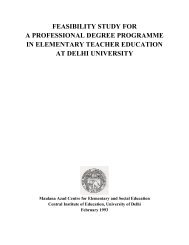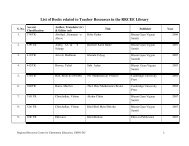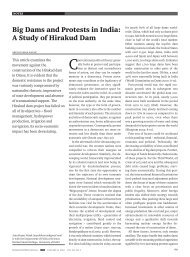Corporal Punishment - Eledu.net
Corporal Punishment - Eledu.net
Corporal Punishment - Eledu.net
You also want an ePaper? Increase the reach of your titles
YUMPU automatically turns print PDFs into web optimized ePapers that Google loves.
Conclusionprevalent in all kinds of schools. The reason is obvious and easy to understand – the pre-service teachertraining institutes from where teachers go to these different kinds of schools are the same. It is in theteacher-training institutes that the weak foundation of cognitive psychology and educational theory islaid. This unfolds in the same manner, whether the trained person teaches in a private or a governmentrunschool. The schools are different in their appearance, infrastructure and fee structure, but children’sexperience is same.3.4 Girls are not sparedAnother popular belief is that the girls are not hit as much as boys. The present study proves this to befalse. A child’s chances of getting hit, verbally abused and physically tortured are not altered by the genderof the child. Girls suffer as much as boys do – the difference, if any, is marginal and gets evened out inthe overall picture. If girls are caned slightly less than boys, their hair is pulled much more than boys’. Theincidence of slapping, being hit with a cane or on the back is high even for girls. Their bodies are not seenas weak when it comes to receiving punishments. As a student, the child loses the potential of any leniencybased on gender and is viewed as equally eligible to receive all kinds of punishments. Girls are abusedwith equal intensity with sexist abuses, caste- and community-based abuses and derisive adjectives. Thisimplies that the words which are commonly associated with men to vent their aggression are very mucha part of the school-going girls’ socialisation process. The tendency of society to use female body parts toabuse people is just as prevalent inside the school and girls are subjected to it at an early age. The schoolboundary does not act as a barrier from any of society’s demeaning practices.3.5 Reasons for punishmentsThe majority of children get penalised for academic reasons, i.e. for not doing a task, for not bringing booksand notebooks, for scoring low marks in the exams and for not being able to perform well – 93.3% of thechildren suffered direct physical violence from their teachers for any of the above-mentioned reasons. Thesecond dominant reason for punishment is child-like behaviour. The child is hit when he/she wants to drinkwater, eat food when hungry, jump or scream to express happiness or talk to another child. The schooldoes not want children to behave like children while learning. Children are expected to leave their ageappropriatetraits at home and behave in a restricted, guarded, scared and controlled manner at school –86.2% children were hit because they showed child-like tendencies in school (for example, if they could notcontrol their hunger and thirst or if they needed to answer the call of nature at a time when the teacherhad given some work or was teaching or was just present in the class). No less than 50.8% children hadbeen abused physically because they did not comply with the rules of their school – they had tried to writeon the backboard, felt bored during morning assembly, could not close their eyes for long during morningprayer, did not wear complete uniform and could not stand in the harsh sun. Some of them had reportedlate by a few minutes in the morning. All this disturbs the order in the school for which children arepunished physically as well as abused verbally. Democratic means of maintaining law, order and control arepremised on values of rationality and the reliance on painful methods for controlling children goes againstthe grain. The schools are unable to create an ethos of rational argument in establishing order which is amust for learning. The schools are also not able to distinguish between the needs of adults and children,who need constructive bodily engagement in their growing years. Children need to play, run, jump and doall kinds of things in the school whereas what dominates school experience for most Indian children isphysical punishment.39


